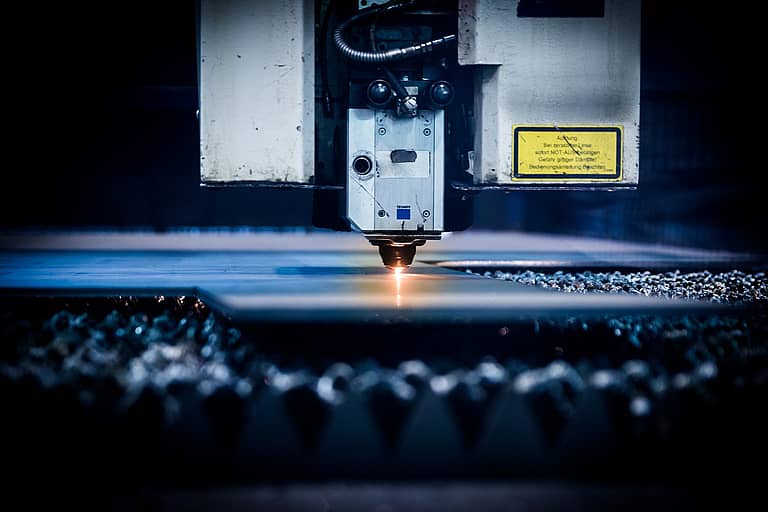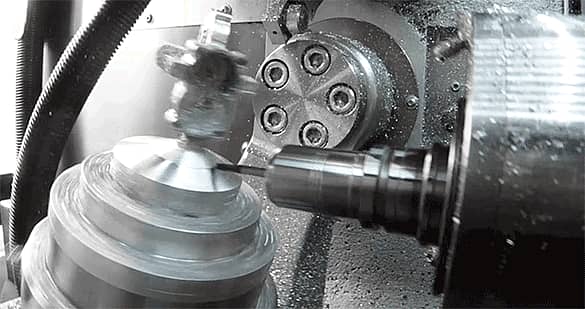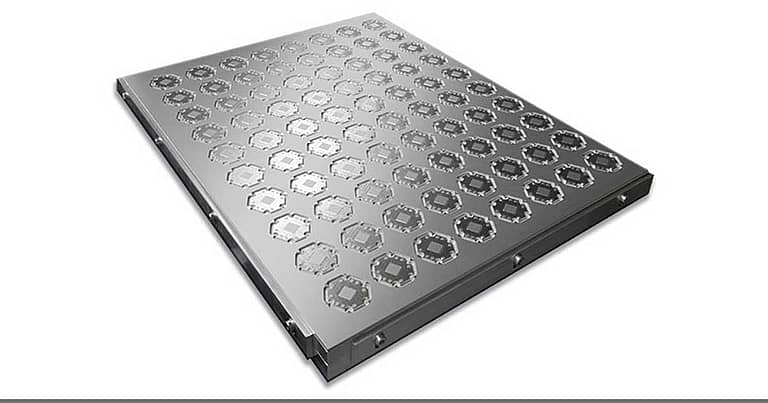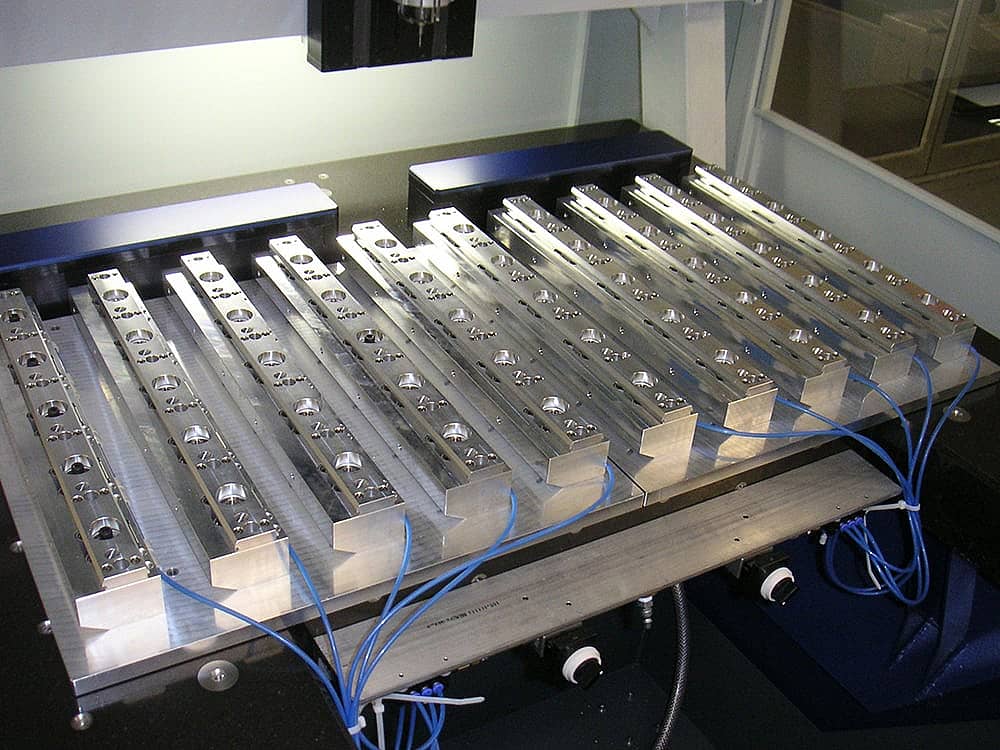
Understanding Complex Machine Parts
In the realm of advanced manufacturing, CNC machines stand as the epitome of precision and efficiency. For many, the intricacies of CNC machine parts can be a daunting puzzle. This guide aims to explain more about CNC machining complex parts and provide quick and accessible design tips for milling.
Several factors can make some parts more challenging to machine than others. Parts that require multiple setups with various steps can be a daunting task to achieve. These parts require machining on different sides and from different plains, causing the operator to plan out each phase in advance.
Other complex machine parts include small features, 3D features, and tight tolerances. Small parts may be challenging due to the tools and RPMs needed. Without the proper tools and high RPM, the operator may run into problems such as tool breakage and long cycle times.
What constitutes a complex part?
3D features are considered a complex part of machining due to the higher level of code and machine kinematics needed to get the motion of the toolpath exactly right. Not all CNC machines can process high volumes of code or can run smooth enough to achieve a good surface quality efficiently.
When machining parts with tight tolerances, an accurate machine is needed to stay within the range of the tolerance callouts. If the CNC machine does not have the accuracy required to stay within the tolerance range, the tight tolerances may not be achieved, causing the part to fail inspection.
Lastly, surface finish requirements can also be challenging for some machinists due to the many components needed to create the desired results. The rigidness of the workholding, the toolpath generated from CAM, the accuracy of the CNC machine, and having the proper tools available are all aspects that make this a complex part.
Complex parts can be challenging for some machinists due to the many factors that go into the creation of the part. Let’s discuss tips to help you achieve the best results, avoid errors, or damage, and provide the best results possible!
Tips for Machining Complex Parts
When machining complex parts, you should have the proper steps, tools, workholding, and program. Working through these factors can be the most challenging aspect of machining complex parts, but knowing what you need in advance sets you up for success, giving you the confidence to tackle any part. Let us dive into these five tips for CNC machining complex parts.
Tip 1: Machining Parts with Multiple Setups
For parts that require multiple setups, the best machine to use is a multi-axis milling machine, as this will allow you to work on multiple sides without the need to create fixtures for each step. The order of operations must allow for the proper rigidity until the final part is cut, holding it perfectly in place as the machine mills. There are limiting factors with 5-axis machines such as part size and tool reach.
If you do not have a multi-axis CNC machine, this is where planning provides you with the best results. Calculate each order of operation and the setups needed for those operations. Always use a reference point when turning a part over and fixturing it for the next setup. Machines that offer probing technology are a fantastic way to maintain accuracy, even when multiple setups are needed to complete your part.
Difference Between 3-Axis, 4-Axis, and 5-Axis Milling
Tip 2: Machining Small Parts
When machining small parts, your success relies on your tools and the capabilities of your CNC machine. Small parts require smaller tools, meaning that you must have the appropriate tool size to machine the part. Along with having the correct tools, having a high RPM spindle will aid in ensuring efficient milling without tool breakage. Before you begin machining, take inventory of the tools you will need, and the compatibility of those tools with your CNC capabilities for best results.
Workholding Tips for Milling Small, Thin Metal Parts
Tip 3: Machining 3D Features
The key to successfully milling 3D features is paying attention to the machine motion and the tool path needed to achieve the design. Be sure to use a CNC machine with a control that can handle the high volumes of code required for machining 3D parts. Not all CNC machines are the same; some controls can only manage a certain level of code generated from CAM. Learn your machine’s capabilities and generate the code accordingly. The smoother the toolpath and motion of the machine, the better the 3D part comes out.
Tip 4: Machining for Tight Tolerances
Successfully achieving tight tolerance all comes down to the accuracy of your CNC machine and the process. Be sure to calibrate your machine before beginning your project by checking and adjusting the machine’s parameters. Next, ensuring that you are using the proper tools for the material is another component to achieving tight tolerances (roughing and finishing). Your machining techniques may change depending on the material and the tolerance range allowed. Lastly, you need proper workholdings to ensure your part does not move in the milling process.
6 Tips for Holding Tight Tolerances
Tip 5: Machining for Surface Finish Requirements
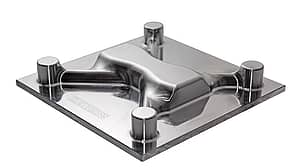
Surface finishes can be considered complex machine parts due to the many factors that play into achieving the desired finish from beginning to end. Design your tool paths in CAM with all the correct feeds and speeds needed to produce the best surface finish. Next, account for the rigidity of your workholding, confirming that it can hold the part with no movement when milling begins. Use new sharp tools for your finish passes to produce the best finish. The proper coolant will also aid in the process.
How to Achieve the Perfect CNC Surface Finish
Making Complex Machine Parts Not So Complex
With all this being said, there are CNC machine accessories and tools to make CNC machining complex parts a whole lot easier. Probing technology increases the overall accuracy of your part and takes pressure off the operator when it comes to measuring along different sides and angles. DATRON offers probing technology that can simply measure a material’s surface through the swift contact of the probe. Our next Control Software registers the measurements of the part and begins milling with ultimate precision, giving you peace of mind when working on complex parts.
Also, vacuum tables are a great workholding solution, eliminating the need for custom fixtures, increasing the overall efficiency of your project. DATRON offers customized Vacuum Table Systems that not only eliminate the need for screws, adhesives, tabbing, or gaskets, but also allow you to machine multiple parts at a time, and easily secure or remove your parts with a flick of the switch to the vacuum pump. These Vacuum Table Systems are a complete game changer for machinists looking to improve the efficiency of their projects.
Wrapping Up
Now that you know some tricks for tackling complex machine parts, let us recap what we discussed in this article. Preparing in advance is going to be the most crucial step in the entire process. Establishing your order of operations, workholdings, and tools needed will always set you off on the right foot for cutting a part successfully.
Another part of your preparation should be getting to know your machine and the capabilities of the control system, the speed of the RPMs, and machine accuracy. This step will help you set the foundation before placing your material on the machine, avoiding potential scrap, or breaking tools while the job is running.
Here at DATRON Dynamics, we understand that mastering complex parts can take a lot of time and practice, but we are here to help! We offer turnkey solutions for all your milling needs and work with our customers to help them best utilize all the tools offered through our user-friendly CNC machines and touchscreen control systems.
Contact us today to elevate your entire machining process from start to finish!




